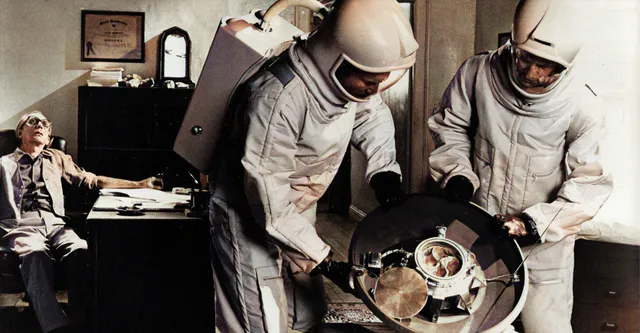Space, the final frontier, is a realm of infinite wonder and potential dangers. While the vastness of space and the risks associated with space travel are well-known, there are less obvious threats that astronauts face. Among these are microscopic entities such as dust, mold, bacteria, and viruses. This blog post will delve into these tiny threats and their potential impact on astronauts’ health and safety.
Space Dust: A Tiny but Potent Threat
Space dust, also known as cosmic dust, is a constant presence in space. These tiny particles, often no larger than a few micrometers, can pose a significant threat to astronauts and spacecraft. Due to the high velocities involved in space travel, even these minute particles can cause damage when they collide with a spacecraft. This phenomenon, known as micrometeoroid bombardment, can lead to the degradation of spacecraft materials over time.
Moreover, lunar and Martian dust, brought into spacecraft during extravehicular activities, can pose health risks to astronauts. These dust particles can be sharp and abrasive, potentially causing respiratory and ocular issues if inhaled or if they come into contact with the eyes. NASA has been conducting extensive research to mitigate these risks, including the development of dust mitigation strategies and technologies.
Mold and Bacteria: Unseen Stowaways
Mold and bacteria are ubiquitous on Earth, and despite stringent sterilization procedures, they have been found aboard the International Space Station (ISS). These microscopic organisms can hitch a ride on astronauts or equipment, creating potential health risks and damaging equipment.
Mold spores can cause allergic reactions and respiratory problems. In the closed environment of a spacecraft, mold can proliferate quickly, leading to potential health issues. Similarly, bacteria in space can pose a threat to astronauts’ health. Some bacteria have shown increased virulence in the microgravity environment of space, making infections harder to treat.
NASA takes the threat of mold and bacteria seriously. The agency has implemented rigorous microbial monitoring on the ISS to ensure the health and safety of the crew. Additionally, research is ongoing to develop new sterilization techniques and materials that resist microbial growth.
Viruses: Dormant Dangers
Viruses, unlike bacteria, are not alive and cannot reproduce on their own. However, they can pose a significant health risk if they are brought aboard a spacecraft within a host organism, such as a human. In the confined and stressful environment of a spacecraft, dormant viruses within astronauts can reactivate, potentially leading to illness.
NASA’s health stabilization program aims to minimize the risk of disease transmission during space missions. This includes pre-flight quarantine periods to reduce the likelihood of astronauts carrying viruses into space. Research is also ongoing to understand the effects of space travel on the human immune system and develop countermeasures to keep astronauts healthy.
Conclusion
While the vastness of space and the technical challenges of space travel are often at the forefront of discussions about astronaut safety, it is crucial not to overlook the threats posed by microscopic entities such as dust, mold, bacteria, and viruses. NASA and other space agencies are actively researching these threats and developing countermeasures to ensure the health and safety of astronauts. As we continue to push the boundaries of human space exploration, understanding and mitigating these tiny threats will be of paramount importance.
In the grand scheme of space exploration, these microscopic threats remind us that sometimes, the smallest things can pose the biggest challenges. However, with ongoing research and technological advancements, we can continue to safeguard our astronauts as they journey into the cosmos.
Exploring the realm of space brings to light various fascinating and concerning aspects. Speaking of microscopic threats in space, you might be interested in learning more about cosmic dust, which plays a crucial role in both space exploration and astronomical studies. Additionally, understanding the impact of microgravity on bacteria is essential, as some bacteria may become more virulent, challenging the health and safety protocols aboard spacecraft. Furthermore, the topic of mold becomes particularly pertinent when considering its rapid proliferation in a closed environment like a spacecraft. NASA’s efforts in microbial monitoring and sterilization are also interestingly linked to bioastronautics, a field that addresses health concerns critical to prolonging human missions in space. These articles offer deep insights into the minute yet significant challenges faced in the quest for space exploration.

